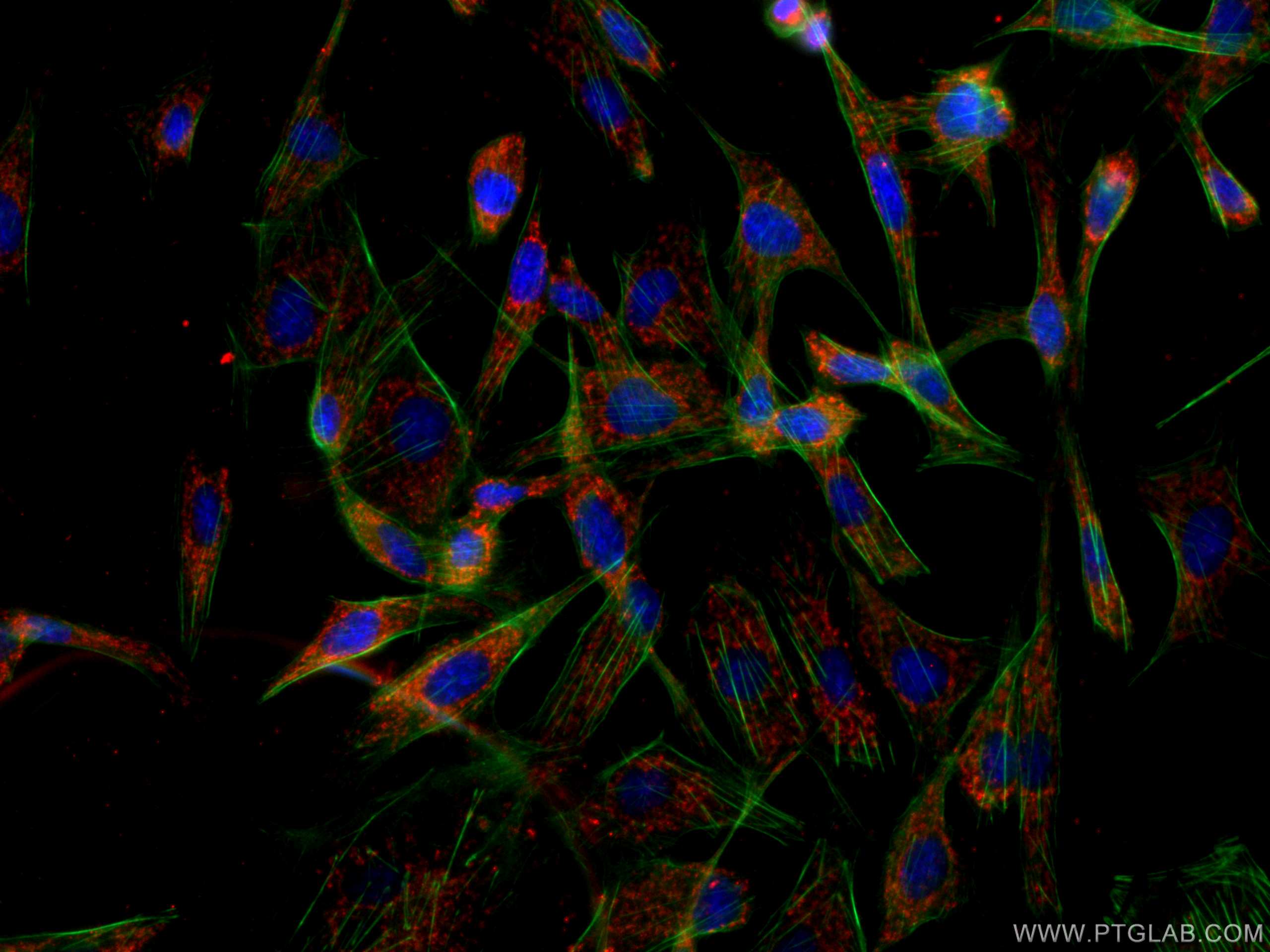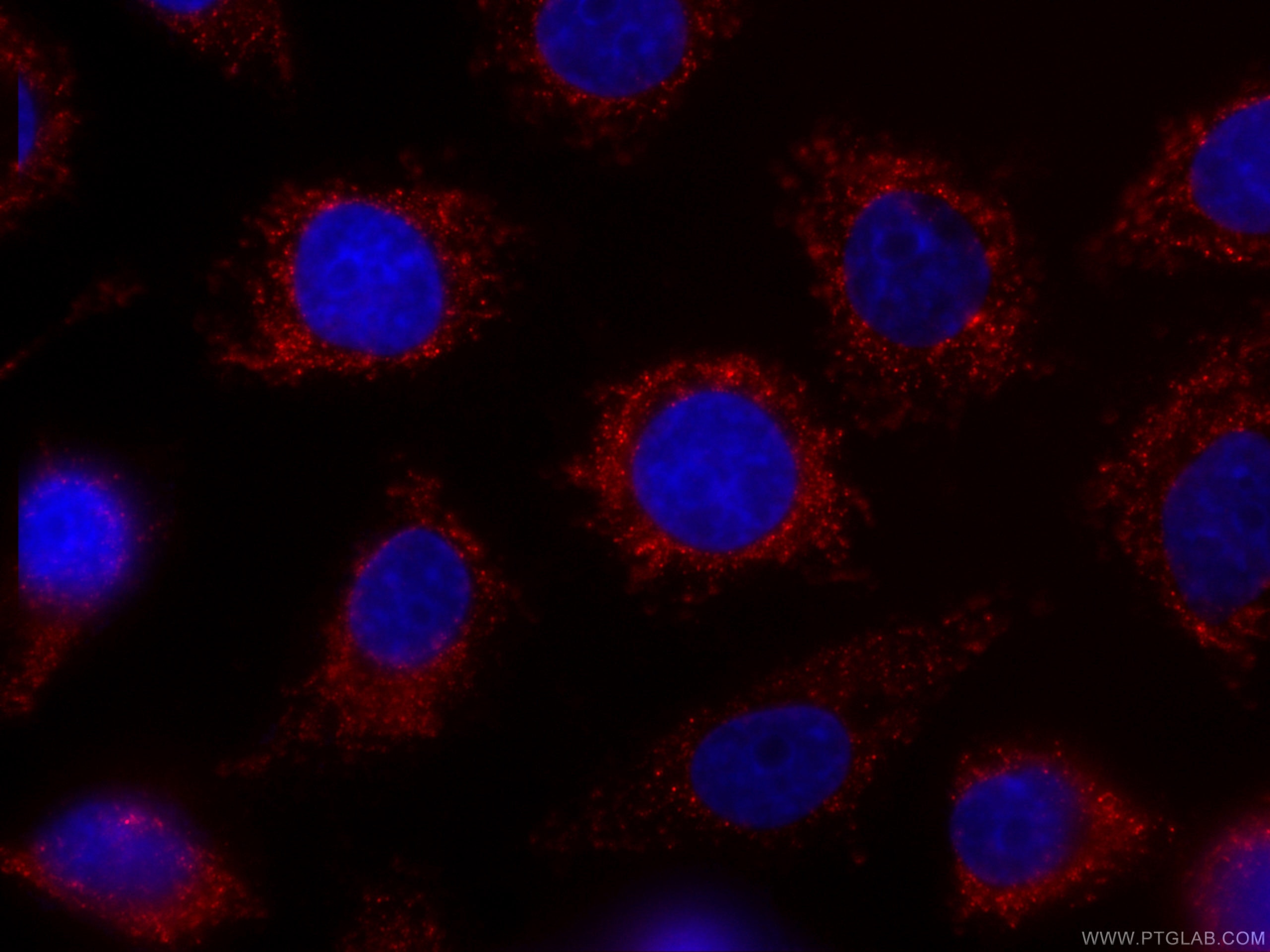Anticorps Monoclonal anti-ITM2C
ITM2C Monoclonal Antibody for IF
Hôte / Isotype
Mouse / IgG2a
Réactivité testée
canin, Humain
Applications
IF
Conjugaison
CoraLite®594 Fluorescent Dye
CloneNo.
2E8G11
N° de cat : CL594-60095
Synonymes
Galerie de données de validation
Applications testées
| Résultats positifs en IF | cellules MDCK, cellules HepG2 |
Dilution recommandée
| Application | Dilution |
|---|---|
| Immunofluorescence (IF) | IF : 1:50-1:500 |
| It is recommended that this reagent should be titrated in each testing system to obtain optimal results. | |
| Sample-dependent, check data in validation data gallery | |
Informations sur le produit
CL594-60095 cible ITM2C dans les applications de IF et montre une réactivité avec des échantillons canin, Humain
| Réactivité | canin, Humain |
| Hôte / Isotype | Mouse / IgG2a |
| Clonalité | Monoclonal |
| Type | Anticorps |
| Immunogène | ITM2C Protéine recombinante Ag4409 |
| Nom complet | integral membrane protein 2C |
| Masse moléculaire calculée | 230aa,26 kDa; 267aa,30 kDa |
| Poids moléculaire observé | 35 kDa |
| Numéro d’acquisition GenBank | BC025742 |
| Symbole du gène | ITM2C |
| Identification du gène (NCBI) | 81618 |
| Conjugaison | CoraLite®594 Fluorescent Dye |
| Excitation/Emission maxima wavelengths | 588 nm / 604 nm |
| Forme | Liquide |
| Méthode de purification | Purification par protéine A |
| Tampon de stockage | PBS avec glycérol à 50 %, Proclin300 à 0,05 % et BSA à 0,5 %, pH 7,3. |
| Conditions de stockage | Stocker à -20 °C. Éviter toute exposition à la lumière. Stable pendant un an après l'expédition. L'aliquotage n'est pas nécessaire pour le stockage à -20oC Les 20ul contiennent 0,1% de BSA. |
Informations générales
The Integral membrane protein 2C (ITM2C) is a type II integral transmembrane protein belonging to a family composed of at least two other members, ITM2A and ITM2B. ITM2C, often called transmembrane protein BRI3, is highly expressed in brain tissue. Yeast two-hybrid screen system revealed that BRI3 could interact with beta-secretase beta-amyloid protein converting enzyme (BACE)1 and the microtubule-destabilizing protein SCG10 (STMN2). It may play a role in TNF-induced cell death and neuronal differentiation. BRI3 was found to inhibit the various processing of amyloid precursor protein (APP) by blocking the access of alpha- and beta-secretases to APP, competitive inhibition of APP processing by BRI3 may provide a new approach to Alzheimer disease (AD) therapy and prevention.
Protocole
| Product Specific Protocols | |
|---|---|
| IF protocol for CL594 ITM2C antibody CL594-60095 | Download protocol |
| Standard Protocols | |
|---|---|
| Click here to view our Standard Protocols |



